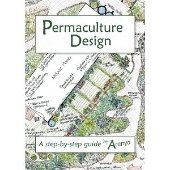 Source: Permanent Publications
Source: Permanent Publications
Publisher:
Pemanent Publications
Summary
In this book, Aranya gives the reader a full breakdown of how to go about designing a permaculture system from the very beginning. He encourages people to slow down and really think about the design details rather than getting too excited and just rushing into it. Just a few things that the book looks at are: systems and patterns, land based design and beyond, site surveying and mapping, identifying functions and setting goals, and implementation and maintenance planning.
Where to get it?
Amazon.com
Amazon.ca
amazon.co.uk
Amazon.au
Aranya's Website
Chelsea Green
Related Videos
Related Podcasts
Podcast 234- Review of Introduction to Permaculture Design DVD
Podcast 207- Planning and Goal Setting Part 1
Podcast 208- Planning and Goal Setting Part 2
Related Threads
Permies Book Review
Permaculture Forum
Permaculture Design Forum
Related Websites
Aranya's Website











